Essential Guide: Perfect Sprinkler for Your Lawn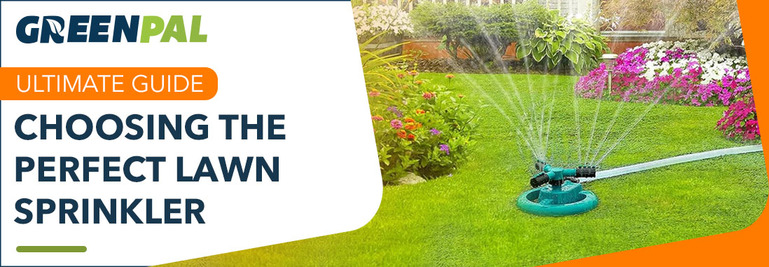 In this brief guide you will learn everything you need to know when it comes to finding the best sprinkler.
In this brief guide you will learn everything you need to know when it comes to finding the best sprinkler.
It’s true, the right sprinkler system can make or break your new lawn!
And the wrong sprinkler, just may break itself.
If you are like most homeowners across America. Your lawn is a pride and joy, and knowing which sprinkler to chose can make all the difference.
Are you ready to learn more about which sprinkler is right for your lawn?
Then let’s dive in!
Why is finding the right sprinkler for your lawn so important?
Look, when you are looking at watering your lawn. Finding the right sprinkler is important for several reasons.
The right sprinkler will:
Conserve water, helping both you and the environment,
Make sure that your lawn gets all the water it needs,
And, displace water evenly.
As a general rule, your lawn should get about one inch of water per week, so the right sprinkler is important!
There are three types of lawn sprinklers to choose from.
When choosing which type is right for you. Keep in mind, your watering needs will vary based on what part of the country you live in. For example, a lawn in southern Georgia won’t have the same watering requirements as a lawn in Northern California.
So, whether you are laying down sod, or trying to turn your brown lawn green again. Let's find out which one of these options will work perfectly for you. 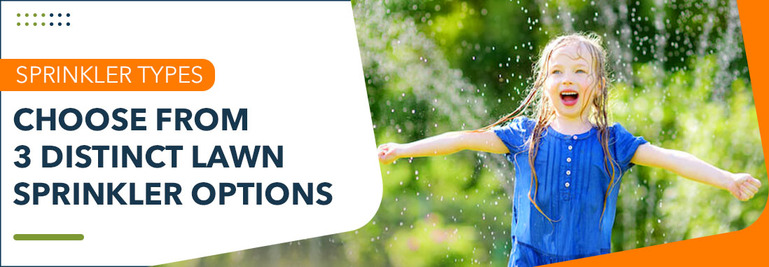
3 Sprinkler Options for your Lawn
1. Oscillating Sprinkler:
The most famous type of sprinkler for lawns is the oscillating sprinkler.
Here’s the deal, the oscillating sprinkler does a great job of watering in a rectangle pattern.
Better yet, it can water up to 4,000 square feet with high enough water pressure!
Features of the Oscillating Sprinkler:
- Even water distribution over a rectangular area.
- Adjustable range and width controls.
- Multiple spray patterns for different watering needs.
- Durable construction, often with metal or heavy-duty plastic.
- Easy to connect to standard garden hoses.
Cons of the oscillating sprinkler: The problem is that due to the curving of the water. A lot of the water will miss the mark and at the end of each cycle, and puddles can develop.
This is especially true in cheaper models.
What should I consider when purchasing an oscillating sprinkler?
Look for a model with at least 15 spray jets to ensure adequate coverage. Additionally, a swift back-and-forth motion is preferable to prevent puddling.
Pro tip! When buying an oscillating sprinkler. You need a model that has at least 15 spray jets for good coverage, and a model that goes back and forth quickly without pausing. This will prevent puddles.
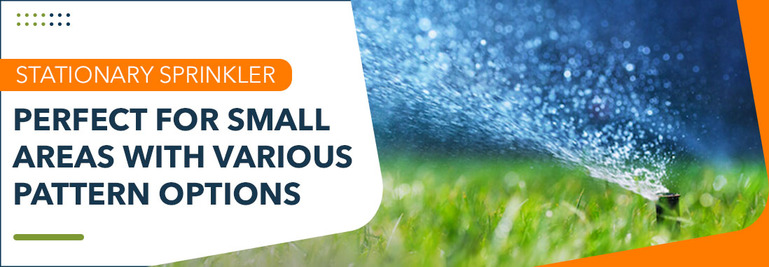 2. Stationary Sprinkler:
2. Stationary Sprinkler:
The stationary sprinkler is designed for small areas and it can have a pattern that is circular, rectangular or square. Best of all, children will love this type of sprinkler and will play with it for hours!
This sprinkler is that it is quite cheap and works well when there is little pressure.
Advantages of Stationary Lawn Sprinklers:
- Ideal for small or irregularly shaped areas.
- Simple design, easy to use and maintain.
- Even water distribution within a set range.
Cons of the stationary sprinkler: The bad thing about this sprinkler is that it can clog easily, and usually has a plastic frame that does not last very long.
Additionally, they offer a limited range so multiple sprinklers may need to be used for any sizeable area.
3. Pulsating Sprinkler:
The pulsating sprinkler model shoots a jet of water in a circular area. This sprinkler can deliver up to 10,000 square feet of coverage. But that is only with a high enough water pressure.
This sprinkler is very good for spaces that are rounded or in an irregular shape. It can cover any size arc over that area, and the water rarely sits in puddles on the lawn.
Advantages of Pulsating Sprinkler:
- Covers a large area efficiently.
- Adjustable range and water density for different lawn needs.
- Minimizes water waste by targeting water more directly to the ground, reducing evaporation.
Cons of the pulsating sprinkler: The problem is that this sprinkler is noisier than other types of sprinklers. Additionally, it doesn't work well under low pressure conditions.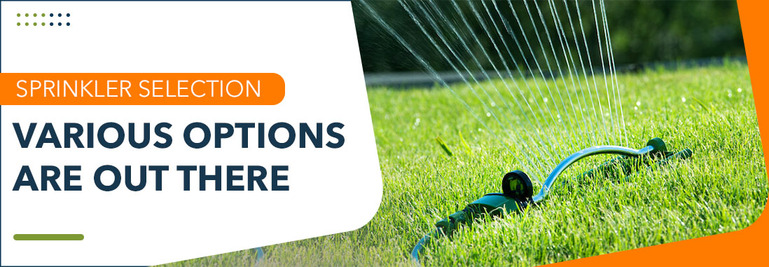
Types of Lawn Sprinklers
Feature |
Oscillating Sprinkler |
Stationary Sprinkler |
Pulsating Sprinkler |
|---|---|---|---|
Coverage |
Up to 4,000 sq ft |
Small areas |
Up to 10,000 sq ft with high water pressure |
Pattern |
Rectangle |
Circular, rectangular, or square |
Circular area |
Ideal For |
Medium to large lawns |
Smaller lawns or garden areas |
Large or irregularly shaped lawns |
Pros |
- Waters in a rectangular pattern - Can cover a large area - Ideal for even watering |
- Affordable - Perfect for small spaces - Easy to use |
- High coverage - Efficient for round or irregular areas - Minimizes puddling |
Cons |
- Can miss spots due to curving water - Puddles at end of cycle in cheaper models |
- Can clog easily - Plastic frame may not last long - Limited range |
- Noisier than other types - Not effective under low pressure |
Frequently Asked Questions
Why a Stationary Sprinkler is One of the Best Lawn Sprinklers?
Stationary sprinklers are highly regarded for their straightforward operation and consistent performance. They shine in their ability to deliver water evenly across a predetermined area, which helps in preventing overwatering or underwatering of your lawn. Stationary Sprinkler is one of the best lawn sprinklers because:
- Cost-effective and durable.
- No moving parts, reducing the risk of malfunction.
- Offers precise watering, avoiding over or under-watering.
How do I choose the best sprinkler for my lawn type?
Consider your lawn's size, shape, and geographical location. Different sprinklers suit different lawn types and climates.
What is an inground irrigation sprinkler system?
Inground Irrigation Sprinkler System:
- A network of pipes installed below ground.
- Includes sprinkler heads that pop up to water the lawn and then retract.
- Can be programmed for automatic watering schedules.
- Designed to water efficiently by targeting specific zones in the landscape.
How far should sprinklers be from the house?
Sprinklers should be at least 18-24 inches (at least 2 feet) away from the house or window to prevent water damage.
What is the best sprinkler for the lawn?
In my opinion, you can’t go wrong with the oscillating sprinkler. It offers a supreme range of coverage and is built to last. However, the type of sprinkler that is best for you truly depends on your budget and lawn.
In my experience, it’s best to spend a few extra bucks and get a sprinkler that will last.
Alternatively, you may want to consider getting irrigation professionally installed.
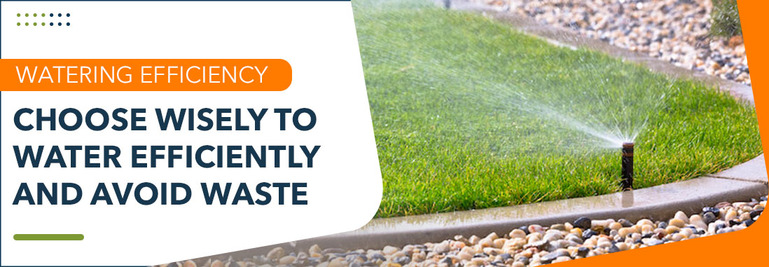
Bottom Line
These three types of sprinklers for the lawn differ in price and capabilities.
However, if you can find the right one for your yard, you will be able to water your lawn without wasting water.
As you know, wasted water is bad for the environment. Additionally, it is bad for your lawn and it is bad for your wallet.
So naturally, the right sprinkler will water all the lawn, without missing anything. While also minimizing the waste of water hitting sidewalks or driveways.
Find the right sprinkler for you and your lawn, and will both be very happy.
It is all part of a good management plan for your lawn, courtesy of Your GreenPal. If you need help watering your lawn or struggle with any lawn care task, consider hiring a Pro through GreenPal.





 Share
Share










